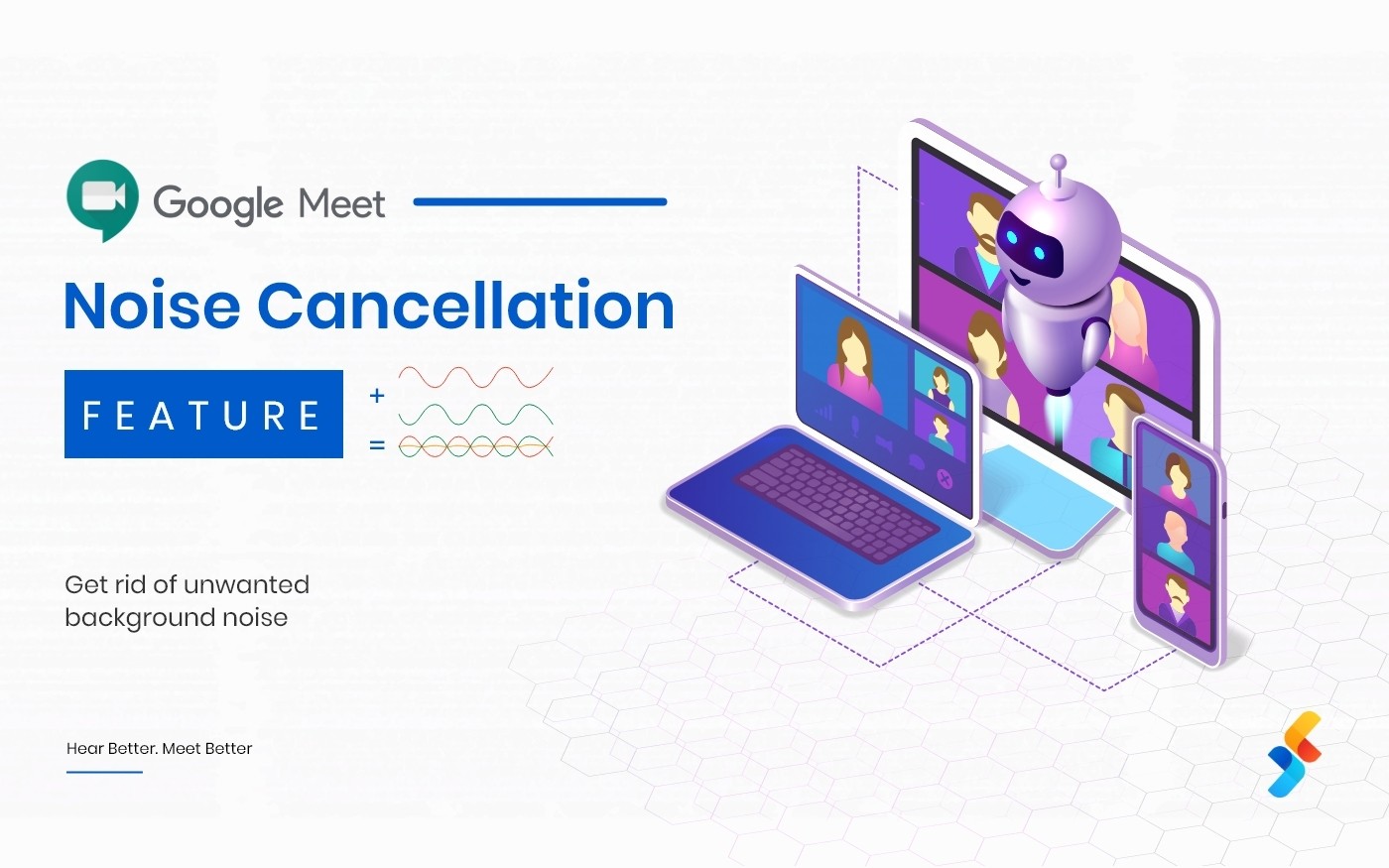The world’s first “smart farming,” or “e-agriculture” practice was observed in 2017, where a crop was sown and tended without involvement of a human entering the field, and was entirely machine-operated with help of digital technology. Since then, smart, and modern agricultural practices have been continuously stepped up to use information and communication technology, making farming not only efficient, but also more sustainable and resilient.
Smart farming is now being widely adopted globally as it improves the yield per unit of farming land for acquiring crops, best in terms of quantity, and quality. The technology also helps farmers get information about the crop, equipment’s availability, and produce market prices in real-time, enabling them in better decision making, reduces waste, and maximizes efficiency in their operations.
According to recent reports, the global market size of smart agriculture is expected to grow from nearly $12.5 billion in 2020 to over $34 billion by 2026. Technologies around the Internet, mobile and smart devices to leverage data analytics, artificial intelligence, and digitally-delivered services including smart apps, are promising this market growth. Among all Agritech practices, the global farm management software and services market was valued at $1 billion worldwide in 2020 and is expected to grow to over $5 billion by 2026. Demand for cloud services, the introduction of marketplaces in agriculture, and on-demand farming services are expected to promote this global growth.
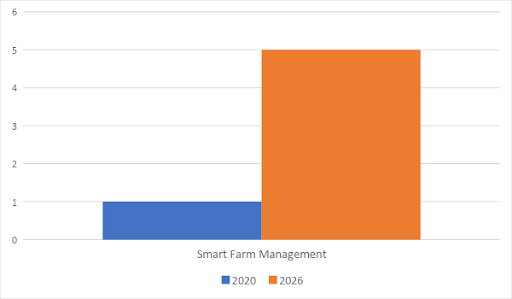
(Image Source: Statista)
A Promising Future
The emergence of technology and digitalization in the agriculture industry during the last few years has not just impacted urban farmers but also rural ones. Considering most of the population in rural land comes from a farming background, the invasion of smart farming technologies has been bringing about some large-scale innovations and ease of doing business among crop growers.
Agriculture is no exception when it comes to technology advancements, and smart farming is becoming one of the latest technological breakthroughs in the field of agriculture with the introduction of smart farmers and field apps, globally.
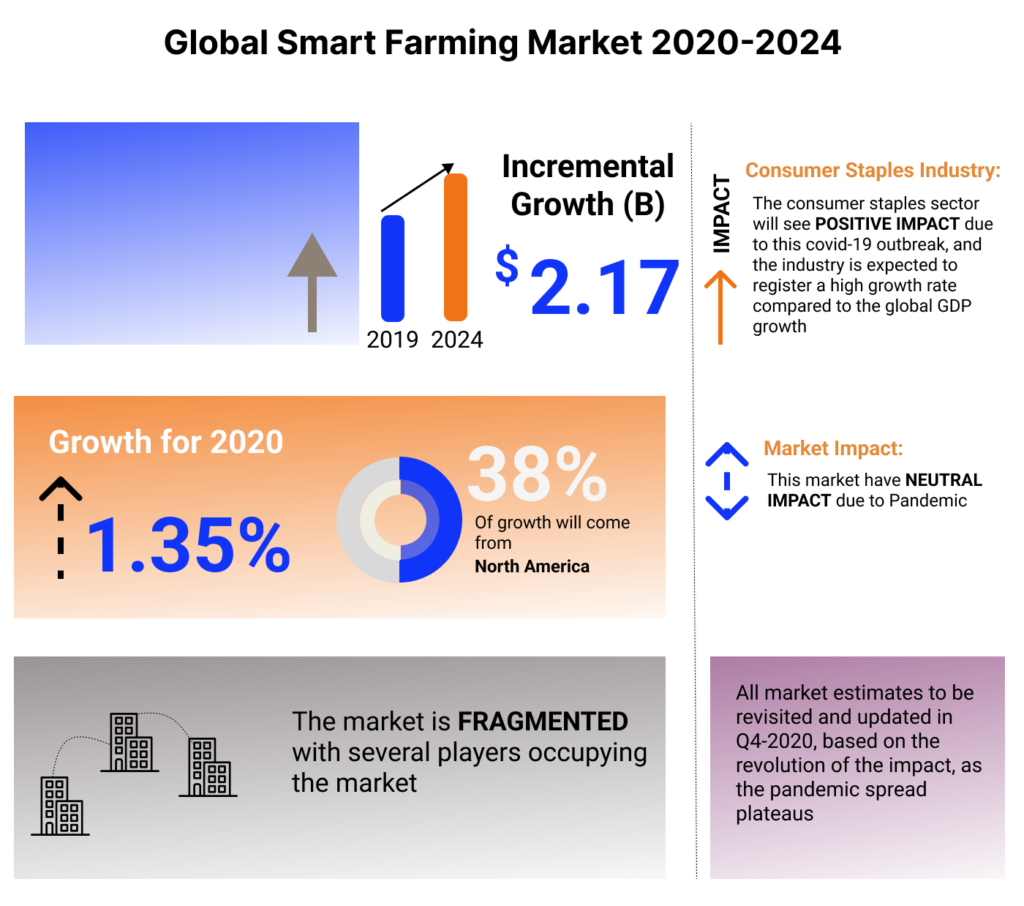
Smart Farming Trends to Expect In 2023
Technology in the agriculture industry is developing at a rapid pace, which is promising a robust future for the AgTech innovation space. Here are the top 5 trends in Agritech to look for 2023, that will focus on helping farmers enhance their crop yield and field management, ensuring a successful farming future.
Technology Collaboration
One of the top trends in Agritech is technology collaboration and integration of digital services in the farming activities. The industry is set to witness more and more players and farmers coming together to build more problem-solving and reliable technology solutions for smarter and better yields.
These technology collaborations will make data from the farm and soil more accessible to farmers in a way that makes their crop cycles more efficient. Moreover, the market will also observe many start-ups coming up with innovative solutions, to establish a deeper understanding among farmers and technology developers about the fundamental makeup of the soil and sales.
Crop Protection
Crops are always vulnerable to attack and weather damage. Insects, diseases, weeds, and pollution are unavoidable enemies to any crop that reduce crop yields and ultimately add loss to farming. To address such challenges, crop protection technologies are on the rise including mobile care applications, soil diagnosing with AI, and weather forecasting solutions.
Agronomic advice via smart applications and dashboards are one of the key trends to witness in the market that enables farmers and smallholders to receive location-specific crop insights, supporting more informed crop protection practices in their routine activities.
Supply Chain Transparency
Technologies such as blockchain are proving ideal to improve supply chain transparency in agriculture and solve many challenges in agricultural supply chains, including lack of social responsibility and poor environmental performance. Technology trends around this also include tracking all stakeholders’ performance across the supply chain to check possible improvement opportunities such as increasing the time-to-market of perishable crops and reducing food wastage.
Having such innovations in place enables farmers to predict when crucial farming activities to happen, measure their effectiveness and optimum efficiency, and meeting the end user expectations.
IoT Technologies
The Internet of Things has been completely revolutionizing the way crop growers, agritech advisors, retailers, and manufacturers interact with the farm. ICT (Information Communication Technology) in agriculture, precision farming, sensor-controlled farms, drones, and livestock monitoring are key areas where the application of IoT has been at the forefront.
Applications of IoT such as monitoring the water levels in tanks, and tracking of seed-growth are also some innovations that are expected to propel in near future, which are fostering the overall growth and adoption of technologies in the digital agriculture industry.
Smart Applications
With massive proliferation of smart devices, participatory in the developing nations like India, have led to major advancement in mobile software and smart applications connected to every industry. Agriculture is no left, and seen many developments across such applications in past. However, the market of smart farming and agriculture apps is on rise and expected to increase at a rapid scale in years to come.
Smart farming applications uses Agtech or agritech or modern technology to automate inputs and increase the quality and quantity of outputs during a complete crop cycle. These apps are specifically designed for all holders with advanced features necessary for growers and other stakeholders to make effective decisions at their farms and further in selling their yields.
Digital Transformation in the Agriculture Industry
Agriculture is very much central to sustainable development and inclusive growth in any growing economy. In geographies like APAC, particularly in India, diverse implications across effective food and industrial supply chains, smarter agricultural practices, and innovative water management have adverse impacts on the country’s overall growth.
Leveraging technologies like the Internet of Things (IoT), Artificial Intelligence, Machine Learning, Mobility, and Cloud Transformation have proven outcomes in improving agricultural throughput as imperative to operational excellence and farmer’s growth economically. Digital transformation via smart agriculture displays optimization, estimation, and monitoring, of farming activities in an automated culture. This is enabling the agricultural technology stack to gradually have rooted presence across the complete farming lifecycle in near future.
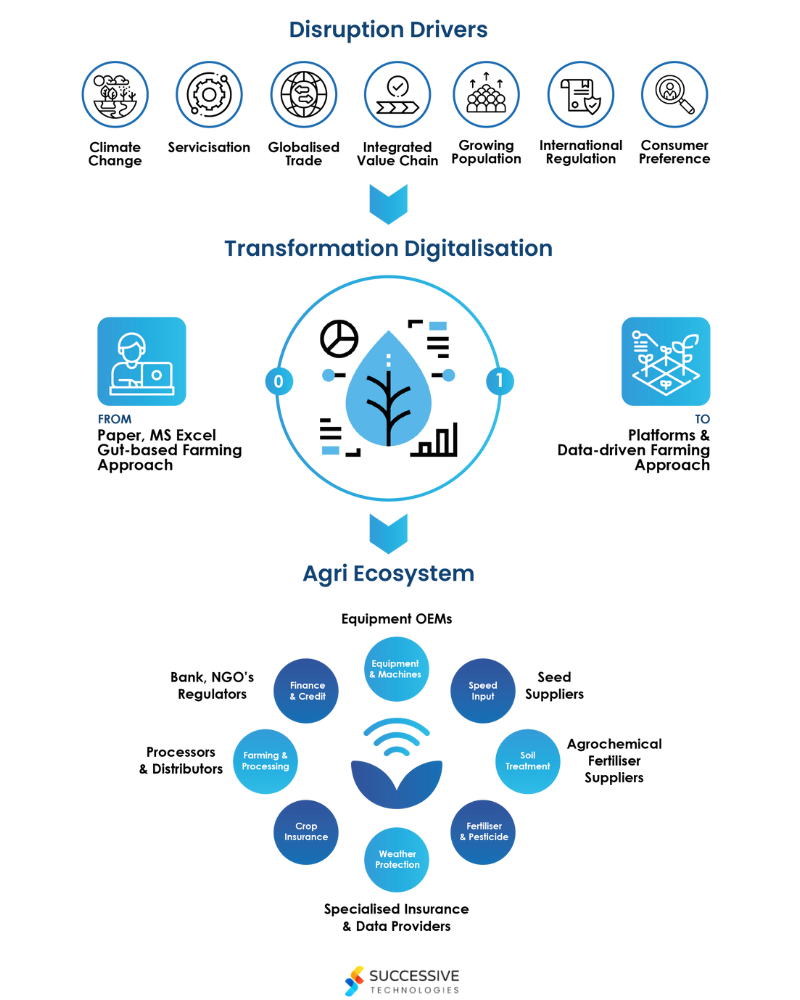
Technology and Digital Applications Transforming Agriculture
Farm Management System
Farm management software is used to optimize and manage operations and production routines at the farm. The system enables farmers in automating farm activities such as data storage, monitoring, record management, analyzing the quality of farming produce, as well as rationalizing routine work and schedules. The software is usually customized to meet the specific needs of farmers/ businesses.
Precision Farming & Irrigation
Precision farming or precision agriculture (PA) technology is an approach to re-organize and re-operationalize the total system of agriculture to achieve low-input, high-efficiency, and sustainable agricultural results. Inputs are utilized in specific quantities to get higher average yields, vs traditional cultivation techniques.
Precision irrigation is an innovative sustainable agricultural approach that permits the application of water and nutrients to the plant at the right time and place and in small measured doses in order to provide it with optimal growing conditions.
Livestock & Yield Monitoring
The technology uses IoT-enabled devices to track and monitor the health of livestock, most commonly cattle. This enables farmers to check in on the health and location of each individual animal in their herd from anywhere as well as receive alerts.
Yield monitoring is a feature of precision agriculture that assist farmers with ample information to make educated decisions about their fields, including moisture levels, grain yield, soil properties, and much more.
Smart Greenhouse & Climate Management
The smart greenhouse and climate management technology creates a self-regulating, microclimate environment for agriculture that is suitable for plant growth using sensors, actuators, and monitoring and control systems. This helps optimize growth conditions and automate the crop-growing process.
Location and Communication System
GPS is a popular agriculture technology for years now. It helps track the status of the crop, for instance; sensors monitoring soil conditions may be able to guide sprinklers and modify watering or fertilizer dosing if they are able to communicate via wireless LANs.
Robotics and Analytics Platforms
The main area of application of robots in agriculture today is at the harvesting stage. Innovative technology applications of robots or drones in agriculture include weed control, cloud seeding, planting seeds, harvesting the crop in an optimum schedule, environmental monitoring, and soil analysis.
A dashboard can display all applications and analysis can be performed to streamline the complete farming process and consider factors of improvement to lower cost and increase throughput.
Inventory and Resource Management
Inventory management or Agricultural Resource Management System (ARMS) enables farmers with an information system support tool or a mobile application to help farmers better identify their fields and livestock production facilities. A comprehensive and automated process assists farmers in planning, developing, or updating their crop plans, equipment availability, and essential inventory of seeds, and fertilizers.
Challenges in the Agriculture Industry
- The cost of technology often creates a roadblock for small farmers/ Agri payers and providers to adopt smart technologies.
- Resistance to chance and use of sophisticated modern equipment is another big challenge.
- Inadequate smart tools and the unavailability of routine resources for smallholding farmers hinder operational growth.
- Minimal or no information regarding the use of modern technology, smart equipment, and its benefits among farmers.
- Breaking the middleman and brokerage cycle to place the crop directly to the open market due to lack of market channel.
- Unavailability of crop/ produce/ and resources competitive pricing to reap in better yield in controlled cost.
Creating Value through Smart Farming Solutions
The adoption of mobile technology in the farming sector is increasing daily. Moreover, today, smart agricultural solutions such as smart device applications, and crop management dashboards are becoming farmers’ best friends. These solutions in the global agritech market, are enabling farming practices, operations, machinery, market prices, and sowing conditions smarter and better than never.
The farming industry, or in large the global agricultural sector that has existed since ages is currently is still regarded as traditional due to major percentage of smallholders have not yet moved to digital. As mentioned earlier, the world’s population continues to grows, so does the massive need for food. Following the traditional way of doing agri business will make it more tough to feed the people of the future.
Urban farmers across the globe have already started shifting towards a more digital-driven approach to agriculture. However, there is still a vacuum in rural sector due to many constraints detailed above. Earlier, due to absence of information and other factors, farmers were still doing what they had been doing for years. But now with the concept of smart farming, even small-scale farmers have an opportunity to move towards digital technology for managing their routine farm activities and enabling the best of their yields.
Smart and innovative tech-driven farming solutions, particularly the hand-held device apps allow farmers with multiple benefits such as, locating their agricultural problems and getting instant solutions to them via expert chat support or on tap call. And since most of these apps are available to use in the local languages, rural farmers can easily use it without any difficulty.
- Smart farming solutions enable farmers with effortful, and budget-friendly farming decisions: for instance, a smart agriculture app will make strategic use of technology and digital tools to detect variability in crops and manage them accordingly, instead of making farming decisions based on old traditional theories and concepts.
- Smart applications for farmers also enable them to make the most use of their yield. By introducing smart farming techniques, farmers can produce more sustainable and economical crops. The apps also assist farmers by making them available on the field when their crops need them the most, for eg: weather updates and possible rain prediction.
- Smart farming activities makes farmers better prepared in advance with required tools and machinery by helping them biy on competitive process from multiple vendors. The smart apps also makes the best fertilizers and other crop sowing inputs available to smallholders on one single place.
SmartFarm Takes the Field
SmartFarm, a mobile application by Successive Digital is focused on providing the agricultural industry with intuitive and smart infrastructure to leverage advanced technology in field of farm and farmer management. The application empowers the farmer with a one-stop-solution in managing their equipment and resources.
A process driven, convenient and sustainable ecosystem drives higher efficiency on field and increase profitability in the market. This is achieved by bringing the Agri payers and providers ranging from raw materials to equipment suppliers and small hold to larger farmers, on one online platform and connect each other.
Successive Digital innovative and inclusive solutions in the field of Agritech have been the driving force of modern and smart farming practices, followed and adopted by individual urban farmers as well as large scale agri businesses.
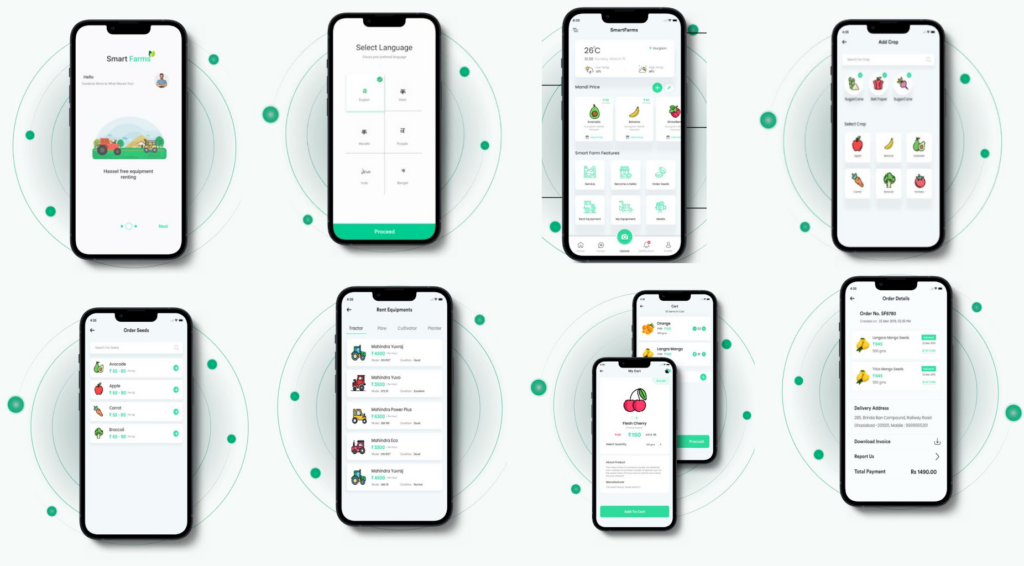
Here’s how SmartFarms enable farmers with real-time data on weather, crop management, the latest marketplace price, and much more.











